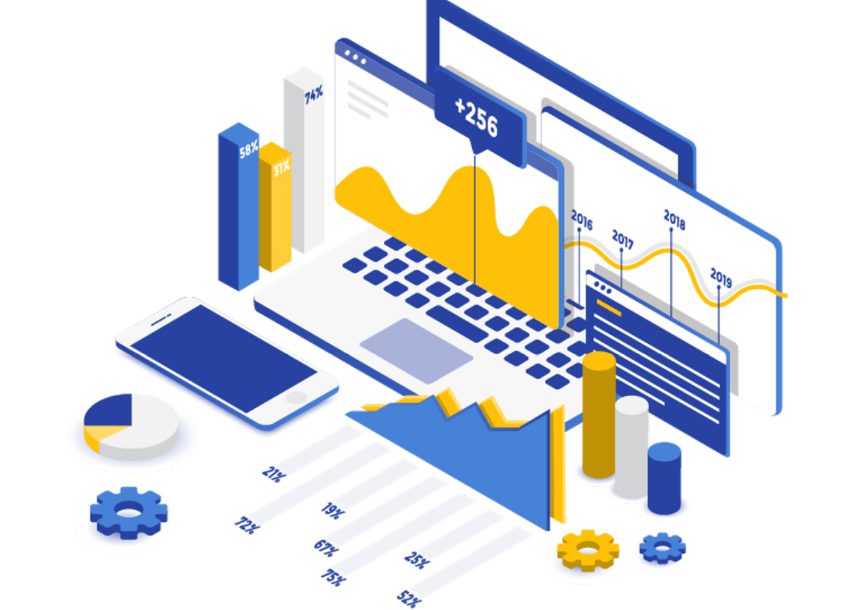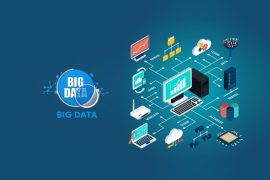Over the past several years, businesses have embraced advanced analytics fundamentals. This ranges from buzzwords like big data to the latest topics such as artificial intelligence and machine learning. These new technologies have caught the attention of IT professionals and company executives who have realized their potential to reduce costs and increase revenue to improve innovation and market competitiveness.
Finding the correct data in the right place regardless of where it was created and then ingesting it to use it for data analytics is an exciting development as it cuts down on time and labor and provides more pertinent information.
In the wake of a result of Big Data, a new trend is forming what’s called “suitable Data Analytics. “
Table of Contents
What is Data Analytics?

Globally, companies produce vast amounts of data daily as log files, websites, transactional data, and other customer-related information. Furthermore, social media websites generate vast quantities of information.
To be successful, companies must use the data they generate to benefit from it and then make significant business decisions. Data analytics helps serve this purpose. The term “data analytics” refers to studying and analyzing massive datasets to discover hidden patterns and unnoticed trends find correlations, and gain valuable information to help make business forecasts.
It boosts the efficiency and speed of your company. Businesses employ a range of modern technologies and tools to conduct data analytics. Data analytics is for the beginner in an easy-to-understand way. That’s why we’ve made the top 10 data analytics trends & statistics in 2022. Let’s have a look.
Top 10 Data Analytics Trends & Statistics for 2022
1. Blockchain Technology
Bitcoin was the first to introduce Blockchain technology, also referred to by the name Distributed Ledger Technology (DLT). It assists businesses in keeping more secure records of transactions and audit trails. It also helps generate assets.
DLT, together with blockchain technology, stores information in a distributed manner, free of alteration, with excellent reliability and authenticity. In simple phrases, DLT and blockchain technology can be described as decentralized networks, which are different from traditional centralized networks and systems based on a third party’s authority. This means that the technology has a wide-ranging impact on various industries and sectors and the strategies they employ to manage data.
2. The shift from extensive data to more minor and comprehensive details
AI, Data fabric, and composable analysis allow companies to gather and analyze the combination of macro and micro data and unstructured and structured data using techniques that provide valuable insights. Composable data analytics blend and incorporate various analytics methods using multiple data sources. In turn, it assists companies in making more efficient and intelligent choices.
Additionally, composable analytics for data provides more flexibility than traditional methods and tools. They also allow organizations to use modular modules that are swappable and reusable. They can be used everywhere, including in containers. Businesses will likely continue using and exploiting their capacity to gain access to significant, small, and large data sources over the following years.
According to one study, in 2025, 70\% of businesses will shift their attention from big data to smaller and detailed data derived from diverse sources. It provides more room for extensive analytics and intelligent decision-making.
3. Adaptive AI Systems
When decisions get more linked with context, continuous, and ongoing, it becomes increasingly essential to redesign decision-making processes. It is possible to use adaptive AI systems to give quicker and more flexible choices by responding faster to changes.
However, to construct and manage adaptable AI systems, you must adopt AI engineering methods. AI engineering manages and optimizes applications to adjust to the changing environment, resist or absorb disturbances, and facilitates the management of adaptive systems.
4. Data-Centric AI
Many organizations tackle AI without considering the particular data management challenges associated with AI. Therefore, it is crucial to establish a formal framework for data-centric AI and AI-driven data.
They deal with the issues of data bias, diversity, and labeling in a more consistent manner to be part of your strategy for managing data, which includes such things as using data fabric for automated data integration as well as proactive metadata management.
5. Metadata-Driven Data Fabric.
The data fabric can listen, learn, and then acts upon the metadata. It flags and suggests actions for systems and individuals. In the end, it increases confidence in the use and trustworthiness of data within an organization. It could reduce by 70\% the number of tasks associated with managing data, like creation, deployment, as well as operations.
For example, the city of Turku in Finland has discovered flaws in its records that hindered its ability to innovate. Integrating data assets that are fragmented could allow reuse of data, cut time to market by two-thirds, and also create a monetizable Data fabric.
6. Context-Enriched Analysis.
The context-enriched analysis is based on graph technology. The user’s needs and context is recorded in a graph allowing for more detailed analysis based on the relationships between data points than data points. It aids in determining and creating an additional context based on similarities and differences, limitations, routes, and communities.
The process of capturing, storing, and using contextual data requires abilities and knowledge in the creation of Data pipelines, Analytics methods, and AI cloud-based services that handle various types of data. In 2025, using context-driven analysis and AI algorithms will replace 60\% of the existing models based on traditional datasets.
7. Decision-Centric D&A.
The discipline of decision-making is a careful consideration of how to make decisions and influencing organizations to rethink their investment in D&A capabilities. Use decision intelligence techniques to come up with the best decisions and then provide the inputs required.
We believe that by 2023, more than 33\% of major corporations will employ decision analysts who will practice decision-making, including decision models.
8. Expansion to the Edge.
Further D&A operations are carried out on servers, devices, or gateways that are not connected to data centers or public cloud infrastructure. They are increasingly located in environments of edge computing which are closer to the places where information and the decisions that are of interest are generated and executed. We predict that by 2025, more than 50\% of critical enterprise data will be processed and stored outside the data center or in the cloud. Enhance D&A capability for governance to the edge of the environment and offer visibility via live metadata.
Furthermore, it supports the persistence of data in environments with edge features, including edge-resident IT-oriented techniques (relational and nonrelational management of databases platforms), Small-footprint embedded database for storage and processing of data nearer to the device’s edge.
9. Region Ecosystems and the Vendor.
Regional laws on data security are causing many global companies to create regional D&A ecosystems to meet local regulations.
The trend will continue to grow in the future multipolar world. It would be best if you thought about the possibility of transferring and duplicating specific or all components that comprise your D&A stack to particular regions. Implementing a multi-cloud or multivendor strategy by default or design would be best.
To build a cohesive cloud data ecosystem:
- Think about a range of steps.
- Consider the extensibility and the broader options of the ecosystem offered by your vendor’s products and think about joining the offerings of your Vendor.
- Consider the benefits of an optimal mix of vendors or the best strategy for end-to-end D&A capabilities on the cloud by considering the advantages of an integrated vendor environment in cost, flexibility, and speed.
10. AI-Risk Management
If businesses put their time and energy into providing support for AI trust, security, and risk management (TRiSM). They will experience improved AI outcomes in terms of adoption, business goals, and both external and internal acceptance of users.
It is expected that in 2026, companies that create trustworthily, focused, goal-oriented AI will see more than 75\% of AI breakthroughs succeed. Greater attention to AI TRiSM is likely to lead to stable and controlled implementation and operation of AI models. Furthermore, it anticipates reducing AI failures, such as incomplete AI projects, and improving the number of harmful or unwanted results.
Conclusion
With the advent of markets for almost any kind of information, including language data, marketing, or geodata, Companies are now more connected to the needs than before. Reading about the most popular data analytics trends for 2022, it’s evident that the future is more data-centric than ever. But, just data will not suffice. Data must be transformed into a usable format, cleaned data, enriched data to gain more meaning, and adequately structured data used to be analyzed.





